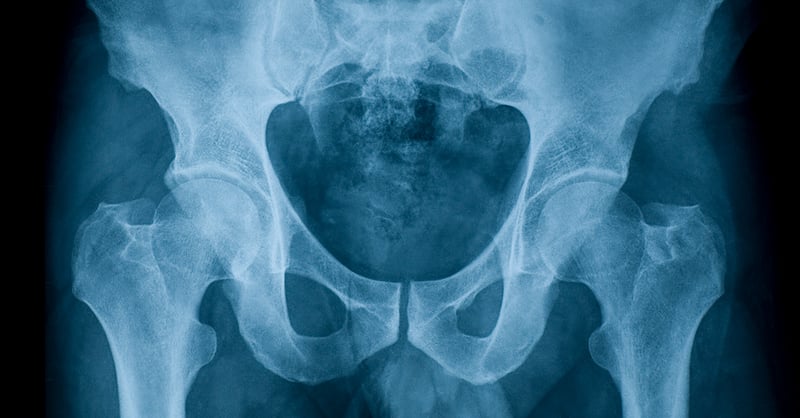
The Cerebral Palsy Integrated Pathway is a follow-up program used for the assessment of the musculoskeletal system in children with cerebral palsy (CP).
In this article you can read more about:
- What does CPIP involve?
- CP surveillance in Europe
- CPIP in the UK and Ireland
- What is the purpose of CPIP?
The aim of CPIP is to improve the lives of young people with CP by offering a high quality, standardised programme of regular examination, enabling early detection and treatment of musculoskeletal conditions and facilitating multidisciplinary management.
What does CPIP involve?
All children entered on to the CPIP undergo a repeatable physical assessment by a trained healthcare professional every 6 months (age 2-6) and every year (until age 16/18 depending on region). This involves close examination of the spine, hips and legs, and documentation of any changes to the physiotherapy management programme of the child, as well as any adverse events, medication surgery that may have occurred since the last assessment.
The only way to diagnose hip displacement or migration is with x-ray. The level of function of a child will determine their risk of hip migration and therefore how regularly they will have an x-ray.
The results of these examinations are demonstrated in a ‘traffic light’ system, which gives health professionals a clear pathway for reviewing the child’s management or requirement for referral to orthopaedic department. The results are also entered into an electronic patient database, and this information is accessible to all professionals who are involved in the care of the child. The data gathered is also used to try to make improvements for the future.
All healthcare professionals who use CPIP are trained according to a programme developed by highly experienced experts in their field. By using a standardised method, it makes the assessment of a child's musculoskeletal system more consistent so a child will be examined the same way no matter who sees them or where they live in the country.
What is CP?
CP is a lifelong, non-progressive neurological condition affecting a person’s ability to move and maintain balance and posture. It’s the most common diagnosis causing motor disability in childhood, and it usually arises as a result of a combination of events either before, during or after birth. In the long term, people with cerebral palsy are at risk of developing secondary health complications such as postural misalignments, sedentary lifestyle, lower fitness, fatigue, among others.
Read more : All you need to know about cerebral palsy
CP surveillance in Europe
CPUP was started in Sweden in 1994 and adopted as a National Quality Register in 2005. It has since been adopted in Norway (2006), Denmark (2010), and Iceland (2012).
There is now almost 30 years of information from CPUP in Sweden, and this has demonstrated that regular surveillance dramatically reduces the number of children suffering a hip dislocation (to less than 1%) and reduces the number requiring orthopaedic surgery (to less than 15%).
CPIP in the UK and Ireland
Following the success and research from Sweden and other European countries, in 2010 a meeting was held in the UK with the aim of reaching a consensus regarding the management of hip problems in cerebral palsy. Following this, a group of clinicians met to discuss the possibility of introducing a hip surveillance programme, based on the Swedish model, for children with CP in Scotland, and the Cerebral Palsy Integrated Pathway Scotland (CPIPS) programme was formally established in 2013.
In 2016, CPIP was implemented for the first region in England, the West Midlands, and is now established across England, Wales and Northern Ireland with several areas having set up their own regional networks.
In 2019, professionals from the Republic of Ireland joined the network in order to support the implementation of CPIP within Ireland.
What is the purpose of CPIP?
It is known that about one third of children with CP in the UK suffer from hip displacement. Sweden has demonstrated a dramatically reduction in hip displacement having a surveillance program.
It is hoped that the CPIP with better, more consistent musculoskeletal assessment, surveillance x-rays, established pathways, enhanced communication and high quality data collection will enhance the care of children with cerebral palsy in UK.
For more information, visit Cerebral Palsy Integrated Pathway.

Jen Ferguson has a clinical background as a paediatric physiotherapist, working for the NHS in the North East of England before joining the Made for Movement team. As Territory Manager, she thrives on sharing her knowledge and experience with therapists, families and individuals with disabilities. Jen feels very passionate that exercise and physical activity should be accessible for everyone, and loves seeing first-hand the enjoyment that movement brings to so many people she meets in her role.
Modern rehabilitation medicine has made considerable progress in recent years, particularly through the use of innovative devices such...
A cerebral palsy register is an organised program for collecting and storing information of a clearly defined set of data. It can be...
ACE SMA is a charity organization in the UK, aiming to raise money to fund clinical research. They are currently funding a study...
Hear from us from time to time and learn new things
